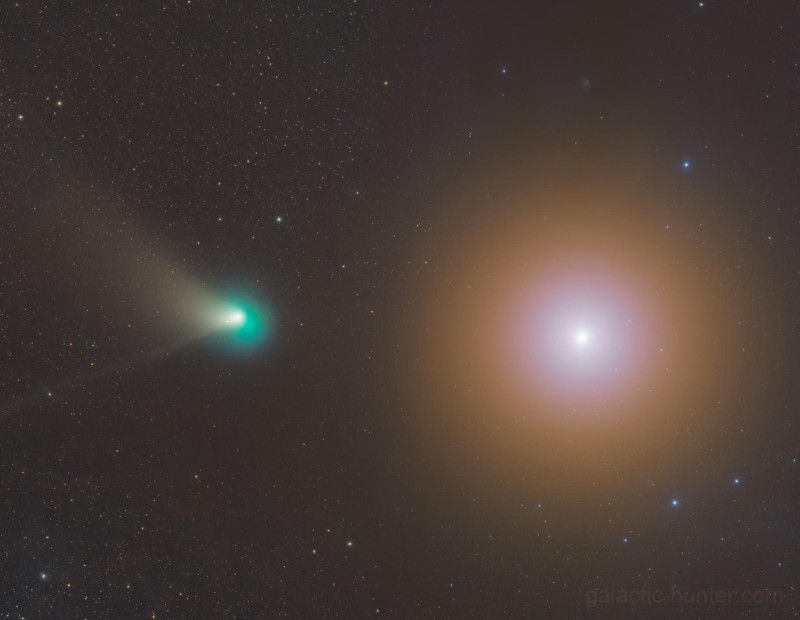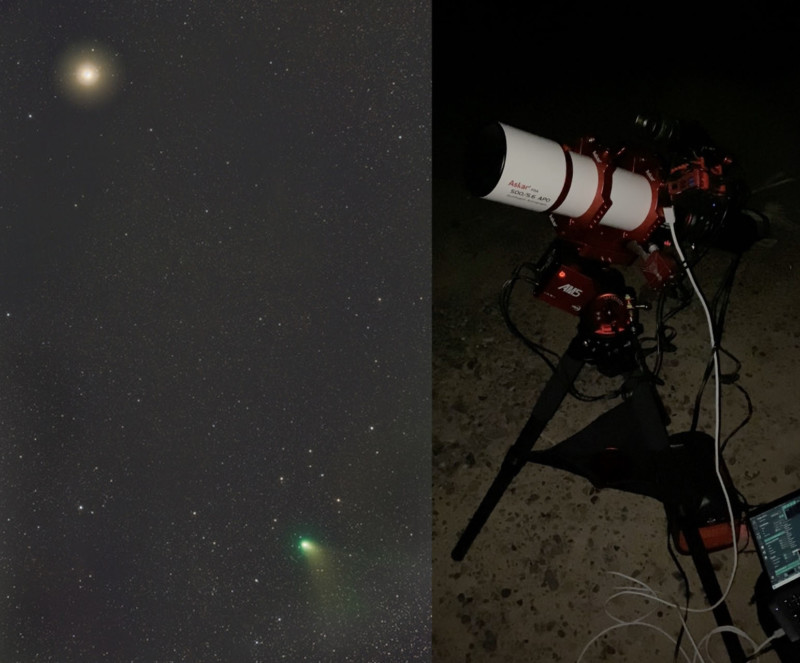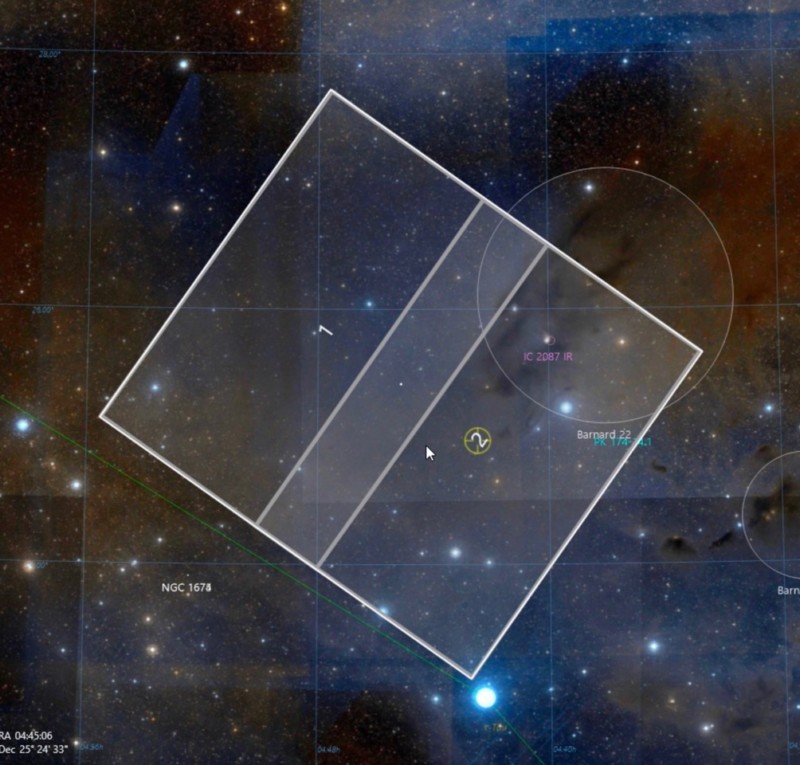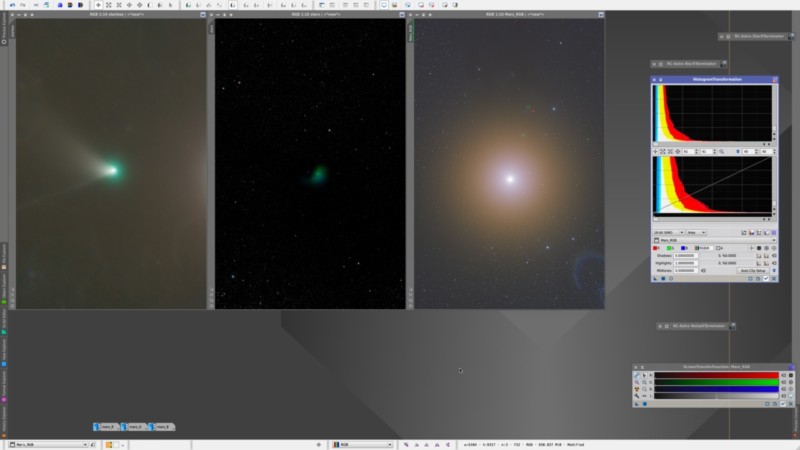Photographers Dodge Coyotes to Capture Comet and Mars Together

Two astrophotographers avoided a close encounter with a coyote in the Las Vegas desert as they captured a stunning image of a green comet and Mars together.
Husband and wife team Antoine and Dalia Grelin took two attempts to image the two celestial objects in one frame, with the first attempt scrapped due to an encounter with a terrestrial predator.
“Shortly after we started capturing the comet, some type of coyote or wild dog found us and it was scary,” explains Antoine. “So as soon as it got far enough we decided to pack and go home.”

Fortunately for Antoine and Dalia, the next night was more important because that was when the comet, known as C/2022 E3 (ZTF), was much closer to Mars offering a better picture opportunity.
Rather than risk more coyotes, and because of the poor Las Vegas weather that day, Antoine made use of his telescope set up in the Utah Desert so that he can operate remotely.
“Luckily, the weather in Utah was great so I connected to my telescope there and aimed at the comet,” he says.
“It was much more difficult to frame it right because despite using the correct live coordinates of the comet, this telescope has a longer focal length than the one I was using the previous night so I had to spend a good amount of time manually slewing the telescope around the comet until I was able to see where Mars was.”

Antoine and Dalia found that the two objects were too close to the edge of the frame so the decision was made to create a two-panel mosaic. Another issue is that their Stellarvue SVX130 full-frame telescope camera needs RGB filters to capture color.
“I tried to hurry up as best as I could because the comet moves at a relatively fast speed across the sky,” Antoine says.
“I started with the first panel, the ‘Comet-centered’ panel, and did 15, 30-second exposures for each R, G, and B filter. I couldn’t do more than 12 to 20 frames per filter because I would risk the comet to move too much and appear strange when stacking the data later.”
After the telescope had taken the same exposure for Mars, Antoine and Dalia were left with nine files: three R/G/B images stacked on the stars, three R/G/B stacked on the comet, and three R/G/B images of Mars.
“First, you need to combine everything aligned on the stars (as you would any deep sky object like galaxies or nebulae),” explains Antoine.
“The problem here is that the comet, unlike the stars, moved a lot during the capture, so it looks stretched and wrong. This combined data is only useful for the stars. Indeed, you need to combine the three filters without caring about the comet and remove the stars during processing to later add them back to the final image. Once I had my stars removed and saved on a star mask for later, I deleted this stacked frame.”

After this, all of the frames need to be realigned but this time with the comet aligned instead of the stars.
“This is possible by manually clicking the core of the comet on the first and last frames of the data. But before doing that, you first need to remove all the stars from every single frame so that only the comet remains,” explains Antoine.
“This process took my computer 13 hours to complete at full fan speed.”
Antoine says that the most difficult aspects of capturing the amazing image (apart from avoiding coyotes) were picking the right exposure times for the speed of the comet, creating a natural mosaic with no seem lines dividng the panel, using three different filters, and combining all of the data with the filters and different files.
“You have triple the work using filters,” he adds. “It would have been much easier with a color camera.”
Antoine and Dalia penned a blog about their capture. More of their work can found on YouTube, Instagram, Flickr, and Twitter.
Image credits: All photos by Antoine and Dalia Grelin.